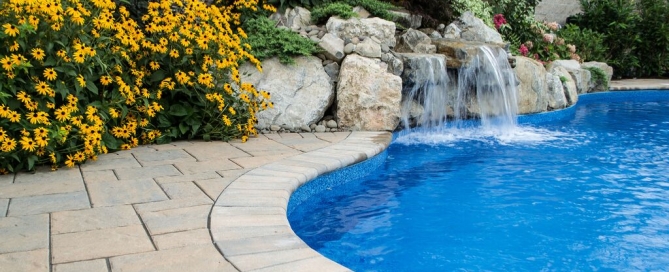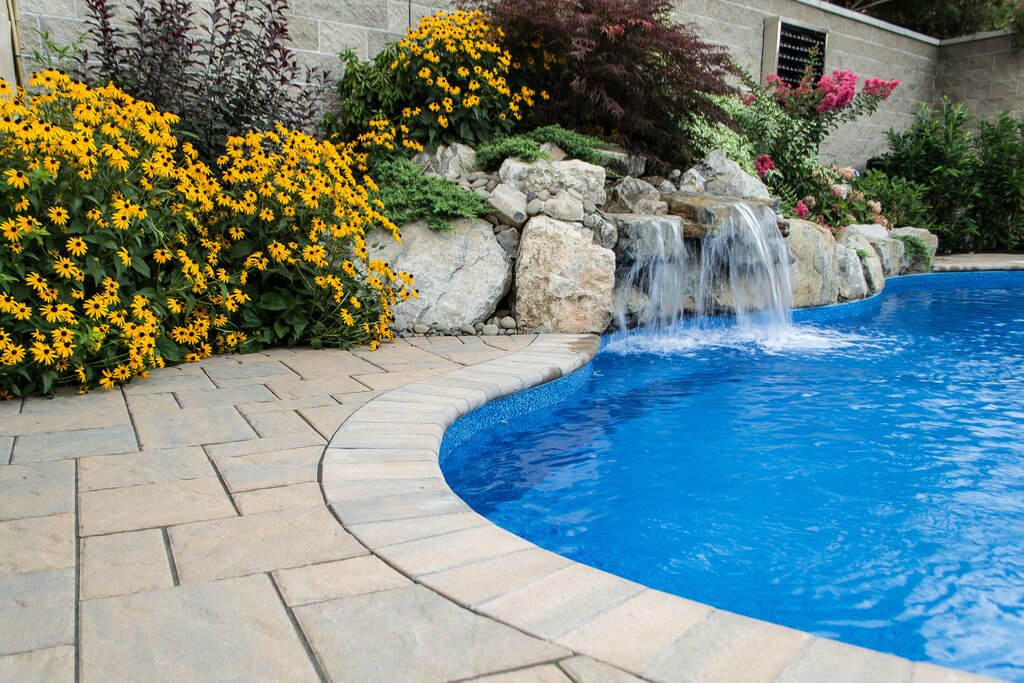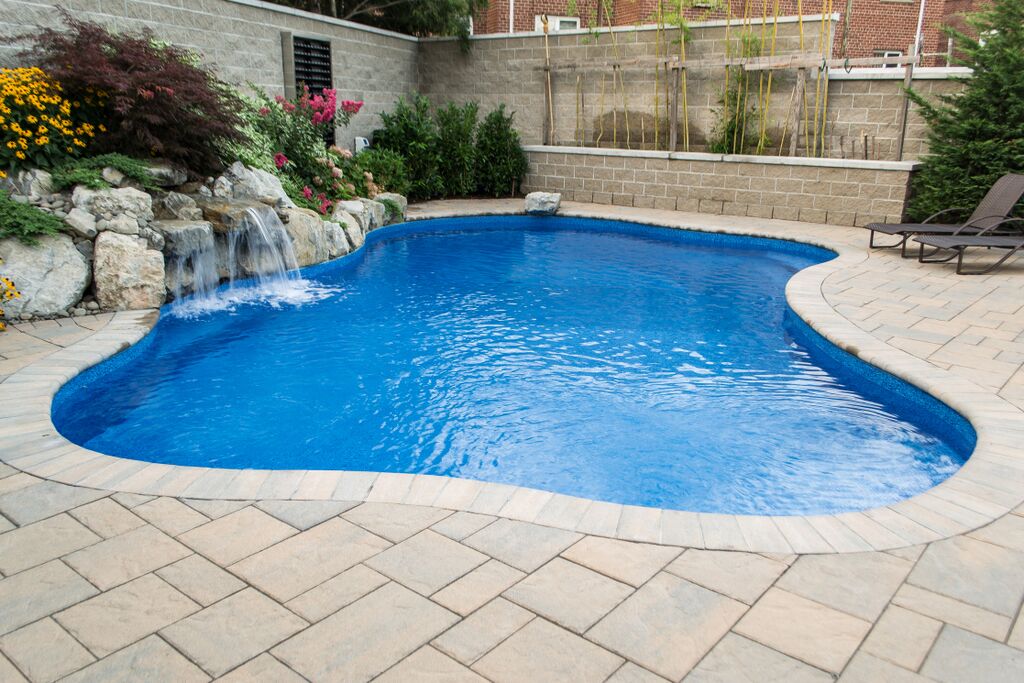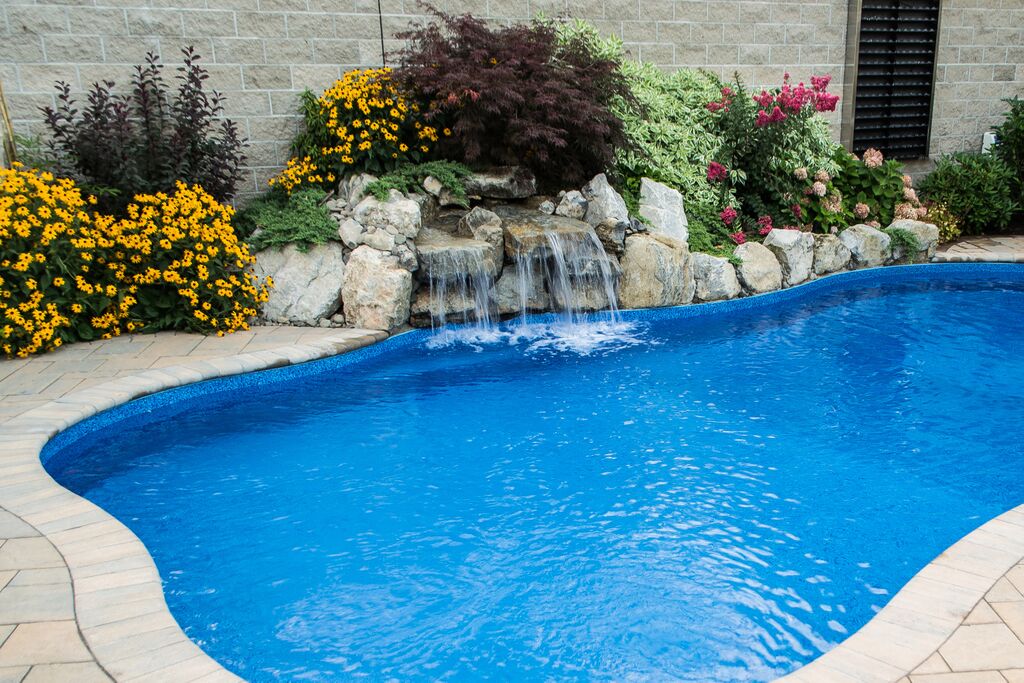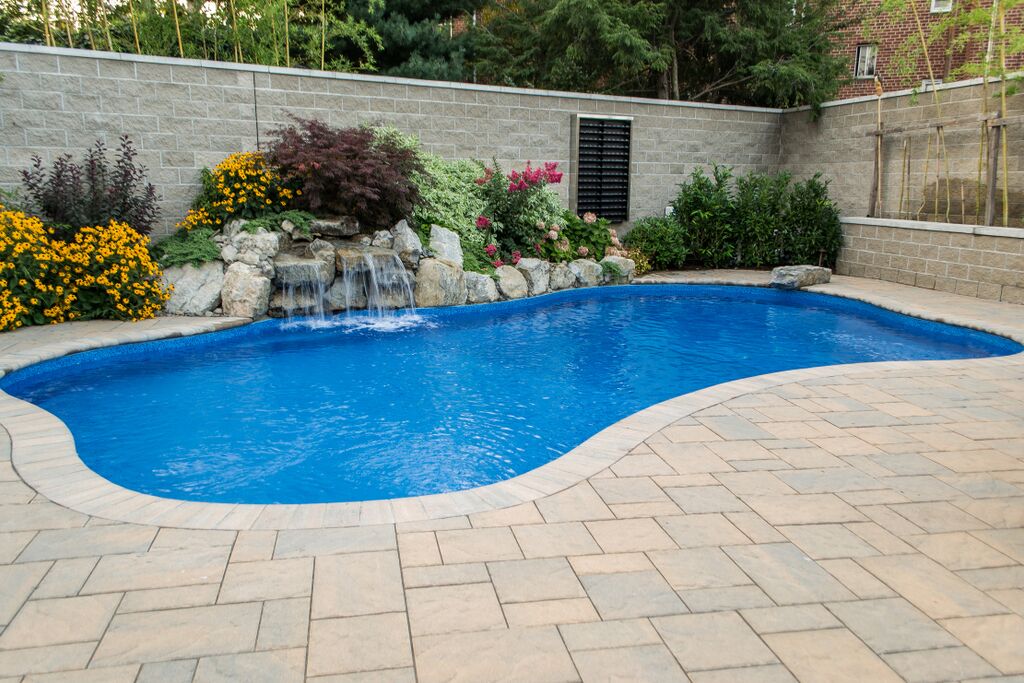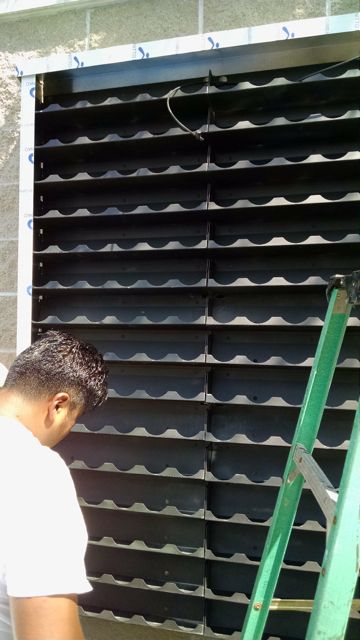Labor Day Weekend: Blissful Leisure Enjoyed in Busy New York City
Whether it’s a long holiday weekend created for workers, or simply the few scattered hours you squeeze out of a relentless workweek, it’s nice to enjoy some free time in blissful leisure at home.
Location, Location, Location
However, what if your property isn’t located in a pastoral area that allows for quiet time? What if your locality is all hustle-bustle? Such was the case for these Deck and Patio clients. Their home is tightly surrounded by apartment buildings, traffic and noise — in the very heart of a borough of New York City.
In this atmosphere, even adding a pool and patio wouldn’t provide the escape they desired. To create for them a real backyard oasis, we had to block out the noise and oppressive atmosphere.
Solutions, Solutions, Solutions
One of the best ways to screen out noise is a sizable waterfall and the clients opted for one to provide splashing sounds into their new pool. In addition, our clients asked us to build a 12-foot-high concrete block wall. While useful as a noise and environs barrier, a wall can be a bit oppressive in itself.
So the next challenge was to soften the wall’s appearance. First, we planted bamboo around its perimeter. Bamboo can be invasive and we encased the woody grass with concrete blocks to limit its spreading.
Special Feature
One thing great about interior and exterior walls is they make an ideal canvas. Taking full advantage of the wall, Deck and Patio’s Director of Sales and Landscape Construction, Marc Wiener, designed and supervised the layout of a “living wall” that can hold multiple-sized pots for plants. When completed, the living wall became living art — changing in color and shape almost daily. (For details on living wall, see photos 5, 6, & 7 below.)
The result: the clients may live in a busy part of New York City, but this Labor Day — and every spare moment they can muster— is spent in blissful leisure right in their own backyard.
“The Plug n Play is very versatile and can be manufactured to accept multiple-sized pots (3” to 12″). Drip irrigation is set up on alternating rows and trickles down to each row below; excess water is either captured or drains. Plants are set on an angle with their holes faced downward so the roots/soil can sap up water via wicking effect.” — M. Wiener.

